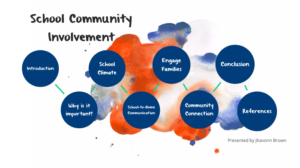Why Namibia Needs Educational Innovation: The SCA Difference
Transforming Education for a Brighter Future
The Education Crisis We Cannot Ignore
Namibia stands at a crossroads. Despite our nation’s commitment to education, with spending averaging 7.6% of GDP, our education system faces unprecedented challenges that threaten the future of our children and our country’s development. The statistics are alarming: only 41.6% of learners who enroll in Grade 1 reach the final grade of basic education. This represents not just numbers, but lost dreams, unrealized potential, and a nation struggling to fulfill its promise to its youngest citizens.
As we navigate the complexities of the 21st century, the question is not whether change is needed, but how quickly we can implement meaningful solutions that will transform educational outcomes for generations to come.

The Multifaceted Crisis in Namibian Education
Alarming Dropout Rates
Namibia experiences one of the highest dropout rates in the region, with systemic challenges preventing students from completing their education. The stark reality is that only 4 out of 10 students complete basic education – a statistic that should concern every Namibian parent, educator, and policymaker.
Infrastructure Deficits
Overcrowded classrooms, inadequate facilities, and limited technological resources create barriers to effective learning. The infrastructure gap is substantial, with 1,022 new classrooms needed just to address current shortages. This shortage directly impacts the quality of education and limits opportunities for personalized learning.
Digital Divide
In our increasingly digital world, limited access to technology and digital literacy skills prevent students from participating fully in the modern economy. Most students lack 1:1 device access for learning, creating a significant disadvantage in developing essential 21st-century skills.
Persistent Inequalities
Historical disparities continue to impact educational access and quality, particularly affecting rural and marginalized communities. Rural areas face the greatest educational challenges, perpetuating cycles of disadvantage that limit social and economic mobility.
The Swakopmund Christian Academy Solution
37 Years of Proven Excellence
Since 1987, Swakopmund Christian Academy has been pioneering innovative education solutions that address these very challenges. Our approach combines the best of traditional teaching with cutting-edge technology and modern pedagogical methods, creating an educational environment that prepares students for success in both local and global contexts.
Our Impact by Numbers
- 15:1 Student-Teacher Ratio – Ensuring personalized attention for every learner
- 1:1 Device-Student Ratio – Bridging the digital divide effectively
- 37 Years of Excellence – Proven track record of educational innovation
Innovation in Action: How We’re Different
Hybrid Learning Excellence: We’ve mastered the balance between the flexibility of online learning and the personal touch of face-to-face instruction. This hybrid model ensures that students receive the best of both educational approaches.
International Standards: Our curriculum prepares students for both local and global opportunities, ensuring they’re competitive in an increasingly interconnected world.
Inclusive Community: Our non-denominational approach welcomes students from all backgrounds, creating a diverse and enriching learning environment.

Comprehensive Educational Programs
Early Foundation Building
- Kindergarten: Building foundational skills in a nurturing environment
- Elementary (Grades 1-5): Comprehensive curriculum with focus on core competencies
Advanced Development
- Middle School (Grades 6-8): Advanced learning with character development focus
- High School Diploma: University-prep curriculum with career readiness
- GED Preparation: Second-chance education for adult learners
Why Choose SCA? The Benefits Are Clear
For Students
- Personalized learning experience with small class sizes
- Access to modern technology and digital resources
- Flexible learning options to accommodate different needs
- Comprehensive support from qualified, caring teachers
For Parents
- Safe, nurturing environment for their children
- Transparent communication and progress tracking
- Affordable quality education with excellent value
- Preparation for success in higher education and careers
Ready to Join the Educational Revolution?
As Nelson Mandela once said, “Education is the most powerful weapon which you can use to change the world.” At Swakopmund Christian Academy, we’re not just providing education – we’re transforming lives and building Namibia’s future, one student at a time.
Our 37-year journey has proven that innovative, inclusive, and technology-enhanced education can break the cycle of educational underachievement. We invite you to become part of this transformation.
Ready to learn more? Visit us at swakopca.com or schedule a visit to see our innovative approach in action. Together, we can ensure that every Namibian child has access to the quality education they deserve.
Swakopmund Christian Academy – Transforming Education Since 1987

